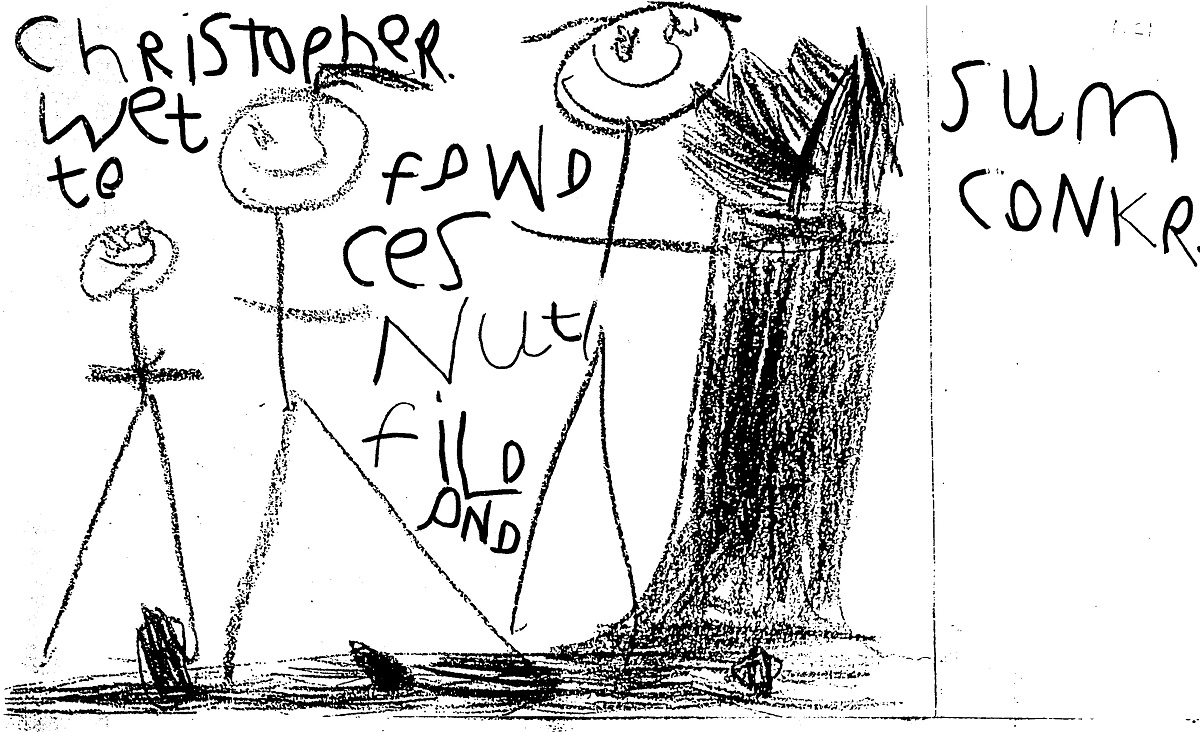
Mistakes in children’s writing
Children, especially young children, make many mistakes. They are learning, obviously! As teachers, our views about those mistakes can be radically different if we closely observe children in the PROCESS of making the mistakes, rather than simply see the end products. As an example of this, let us look closely at 5-year-old Christopher writing about collecting conkers. Here is the piece of writing he ended up with.

To most of us this just looks incoherent. However, let us look at this piece as it emerged to see if we can notice any patterns in its production.
Christopher began by the usual writing of his name at the top of his page.

His next step was to draw a picture of the events he was intending to write about. Research (Adoniou, 2014) suggests that drawing before writing can very positively affect the quality of the subsequent writing. As Adoniou puts it, “Children who draw before they tackle writing tasks produce better writing – it’s longer, more syntactically sophisticated and has a greater variety of vocabulary. It is likely this is because the act of drawing concentrates the mind on the topic at hand and provides an avenue for rehearsal before writing – rather like a first draft where they can sort things out before having to commit words to a page.”

Christopher’s problem here is, of course, that his drawing takes up most of the space on his page. There is not much room left for writing!
But Christopher has learnt that, when you write, you start at the top left-hand corner and generally proceed downwards and to the right. So he writes, “Christopher (already handily there for him) went to chestnut field and ..”

And now he hits a problem. He can no longer stick to his rule about writing proceeding downwards and rightwards – yet he has more to say. He solves one problem by breaking a rule and slotting ‘found’ into the only space available.

But he still has more to say and no space in which to say it! At this point Christopher gives up and asks his teacher what he should do. She simply gives him the instruction (simple to her, but not yet obvious to Christopher) “Use the next page”. So, he does.

So, although to adults, it seems that Christopher’s writing has been full of basic errors, what has actually been happening is that he has followed some theories that he has about how writing works, breaking his own rules when he needed to and ending with a major realisation about sequencing writing. Some active learning, indeed! And we should note that had the rule “Do not make mistakes” been previously thoroughly instilled in Christopher, his learning as he worked in this writing would have been severely limited.
The mistakes that children make in their writing are not “just plain errors” – they allow important insights into their thought processes. Windows on thinking.
